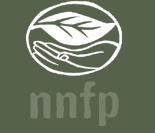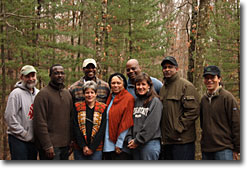 The National Network of Forest Practitioners has evolved, since 1993, from an informal group of innovators working for sustainable forestry and rural development into an independent 501c3 non-profit organization with a track record of carrying out a variety of projects involving networking, education, technical assistance, and policy.
The National Network of Forest Practitioners has evolved, since 1993, from an informal group of innovators working for sustainable forestry and rural development into an independent 501c3 non-profit organization with a track record of carrying out a variety of projects involving networking, education, technical assistance, and policy.
Through its evolution the NNFP has focused on different strategies and activities based on its organizational development. At first NNFP was an informal networking group helping innovators in rural communities connect, share ideas, models, resources, and mutual support. As it developed there was an increasing focus on technical assistance and training, with the Week in Washington partnership, workshops on the USFS Fire Plan, and training on other topics. Most recently NNFP took on a strong focus on internal and external advocacy for greater cultural diversity within community forestry and significant progress was made in diversifying NNFP’s board and membership.
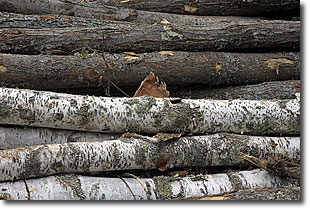 Throughout its life NNFP is most closely identified with the Annual Meeting. A heady event full of inspiring ideas, exciting connections, and a visionary and motivational energy. During the rest of the year NNFP has typically been less visible in communities and people have felt less connected. The Working Groups model allowed some people to be more connected with NNFP but they involved relatively few people. A new model of Regional Forums was piloted, with great results in the Southeast where active NNFP members provided strong leadership and deep community connections.
Throughout its life NNFP is most closely identified with the Annual Meeting. A heady event full of inspiring ideas, exciting connections, and a visionary and motivational energy. During the rest of the year NNFP has typically been less visible in communities and people have felt less connected. The Working Groups model allowed some people to be more connected with NNFP but they involved relatively few people. A new model of Regional Forums was piloted, with great results in the Southeast where active NNFP members provided strong leadership and deep community connections.
Recently NNFP went through a dramatic transition, with a financial crisis and the layoffs of all staff. While NNFP nearly closed, the organization was successful in surviving this transition and the dedication of the board and support from the Ford Foundation allowed the organization to re-emerge as a newly reborn organization, intent on maximizing impacts, developing as a long-term institution with a strong foundation, and intent on increasing its relevance to rural communities across the country.
With 5 days of board retreats in the Fall of 2007 NNFP emerged with this new vision for rural revitalization and a clarity of focus on how NNFP does its work and its theory of change.
Strategy
Key questions:
What is a Practitioner? Who are NNFP’s members?
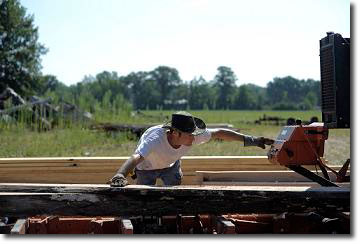 Practitioners are the “movers and shakers” in rural communities. The “spark plugs” that have a vision for a better future for their community. A future with greater prosperity and a healthier environment. While some practitioners act as individuals, most often they are involved with groups -be they non-profit or for-profit. For the “spark plug” to move forward it needs to interact with other parts.
Practitioners are the “movers and shakers” in rural communities. The “spark plugs” that have a vision for a better future for their community. A future with greater prosperity and a healthier environment. While some practitioners act as individuals, most often they are involved with groups -be they non-profit or for-profit. For the “spark plug” to move forward it needs to interact with other parts.
Practitioners are not just forest workers, but the variety of people doing work in the woods, in offices, and at the mill. NNFP does not try to engage every “rank and file” worker, landowner, or small business owner. We are focused on the “dreamers and doers”. The visionaries who are not afraid to get their hands dirty. A practitioner is someone who has a dream for a better world and is willing to DO something to get there. It is not for people who want to just study, teach, analyze or research. It is not for people who talk about what someone else should do, or what this group or that group does wrong.
It is the eclectic, sometimes eccentric, “radical center”. The people who are deeply committed to a dream of a world where rural people have good living-wage jobs, communities are inclusive and democratic, and where forests are sustained not depleted. People who are not just complaining or complacent, but who are committed and catalytic. Who help us to be the best that we can be, and expect the best from our society.
A practitioner is someone who DOES. So, is anyone who DOES things a practitioner?
NNFP members are defined both by Action and by Values. An NNFP member is someone who works on solutions that work for all parts of the community. The different sub-groups in a rural place as well as the ecological community that we all depend upon. NNFP members are committed to long-term prosperity and are “Generationally Generous”. We do not enrich the current generation at the expense of future generations. Our approach is to live within what nature gives us and not to “deplete” resources.
For NNFP nobody is “expendable”. Solutions that work only for the wealthy are not solutions. Solutions that help low-income communities but are not economically viable in the long-term are not solutions. Solutions that liquidate natural resources or damage ecological systems are not solutions.
NNFP members DO work for:
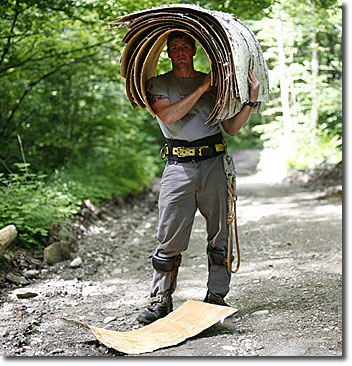 * Activities that create jobs that maintain, or restore ecological functionality and natural capital
* Activities that create jobs that maintain, or restore ecological functionality and natural capital
* Activities that include groups that often are excluded (ethnic minorities, women, “locals”, “outsiders”, low-income people, “rich” people)
* Activities that bring together people who are different, to find ways they can work in some common cause.
So NNFP is not focused on “workers” or “environmentalists” or “business owners”. We are focused on the initiatives and efforts that create living-wage work that is good for the environment and profitable.
We focus a lot on small businesses, and our bias is toward activities that create broader ownership, keep more profits in rural places, and share profits broadly rather than narrowly.
Many family-owned businesses do this, many cooperatives do this, and many non-profit projects help do this.
The more strategies broaden ownership, increase investment in rural areas, increase circulation of local dollars locally, and leave forests more productive and healthier than they started, the more they resemble NNFP’s focus area.
The main dimension of NNFP’s approach is that there is no “Us and Them”. It is a small planet, and in rural communities we know we are all “in this together”.
Role
As a small national organization NNFP clearly cannot be “all things to all people”. With a staff of 5, and a 50-state service area we have to target our resources very strategically.
NNFP’s new focus revolves around targeting resources based on the following criteria:
* Local leadership/initiative
* Interest in working with NNFP
* Availability of other resources (NNFP should focus in areas with fewer resources)
* Potential impact
* Inclusion and equity (it is important to work in lower-income areas even if it is harder, and important to facilitate inclusion of excluded groups (minority groups, NTFPs, etc.)
Theory of Change
 The focus of NNFP is help catalyze development of sustainable forest economies in rural America. By developing jobs insustainable forestry and natural resources management NNFP can shift the rural economy to more sustainable activities and help focus resources on initiatives that maintain or enhance natural assets, build local ownership, and broaden economic prosperity.
The focus of NNFP is help catalyze development of sustainable forest economies in rural America. By developing jobs insustainable forestry and natural resources management NNFP can shift the rural economy to more sustainable activities and help focus resources on initiatives that maintain or enhance natural assets, build local ownership, and broaden economic prosperity.
The current focus for NNFP is on developing sustainable jobs relating to forests. These jobs can be in forest management, timber cutting, forest products manufacture, ecological restoration, ecotourism, or whatever forest-related enterprise area. The focus is on success of small locally-owned enterprises as these create new jobs and are tied to the local community, and thus committed to being there “for the long haul”.
How we do it
Because of limited resources and the need to be strategic about our focus of those efforts NNFP concentrates ontwo areas that we feel will catalyze broader change. As NNFP is not a “mass movement” organization – not a union or a landowner association- our role is to support the local leaders and innovators in communities.
Our role and our focus is to help increase the effectiveness and success of:
* Local non-profits that seek to support sustainable forest jobs
* Small rural businesses that create forest-related jobs and income
We do this by:
* Partnering with regional non-profits, agencies, and other resource providers
* Convening regional trainings, venues for dialog and strategy, and other key actions
* Helping densify networks within regions and develop linkages between regions
Nationally our role is to:
* Develop resources for local organizations and businesses through:
o Identifying potential sources of revenue (federal, state, and foundation grants, etc.)
o Developing new sources of revenue (donor education and cultivation, appropriations and other policy work generating resources for local groups, cultivation of social investment sources, etc.)
* Create a framework for development of common vision and understanding of best practices through:
o Policy discussion and strategy
o Dissemination of models through national networks
o Analysis of models, their effectiveness and requirements
* Increase the visibility and importance of community-based strategies through:
o Increased connection of practitioners with policy makers
o Increased telling of community stories in local, state, and national media
o Facilitation of national initiatives comprised of local and regional organizations
Current Topics
In our 2007 assessment, talking with community forestry groups across the US, and our internal planning we identified the following key lever points that would help facilitate the success and effectiveness of local groups:
Issue: Funding (the biggest need groups mentioned)
Action: Resource Development
NNFP will help mobilize a broader base of resources for community groups by:
* Researching private foundation funding and sharing leads with groups
* Working with member groups to develop effective grant strategies and proposals
* Sharing funding leads with our members through our newsletter
* Cultivating donors to consider community forestry funding
* Helping community groups tell their stories through the media so they gain visibility
* Increasing awareness of, and access to, federal grant programs
* Identifying existing and potential new federal funding sources
* Working with practitioners to:
o Increase funding appropriations for existing useful programs
o Develop new funding sources and secure their authorization
Issue: Leadership
All the funding in the world is not going to help if there are not successful leaders who can unify people around a common vision, turn resources into actions and focus action for greatest impact. NNFP seeks to develop “servant-leaders” whose motivations come from a desire for a better world, not from self-enrichment or self-aggrandizement. We seek to foster a leadership that is about empowering others to realize their greatest potential and animating communities to find their own successes.leadership bw
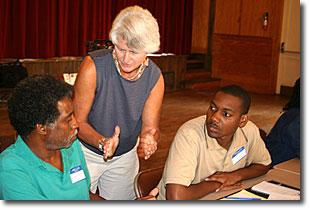
Action: Leadership Intensive
NNFP will develop a leadership development intensive tailored to the needs of community forestry leaders, focused on developing their vision and inner resources for making impact.
NNFP will also research other leadership development resources, particularly ones where funding exists for scholarships, and make them available to community groups.
Issue: Small Forest Business Marketing
 While many small rural businesses are good at making things, many of them break down when it comes to selling them. With the tremendous opportunities in Green Building, and other high-growth markets for socially and environmentally friendly products, rural entrepreneurs have the potential to secure markets that can provide a living wage and profitability from “doing the right thing” in the woods. But most rural entrepreneurs are disconnected from the urban “Green” markets and there is a need to more systematically connect them with opportunities.
While many small rural businesses are good at making things, many of them break down when it comes to selling them. With the tremendous opportunities in Green Building, and other high-growth markets for socially and environmentally friendly products, rural entrepreneurs have the potential to secure markets that can provide a living wage and profitability from “doing the right thing” in the woods. But most rural entrepreneurs are disconnected from the urban “Green” markets and there is a need to more systematically connect them with opportunities.
Action: Green Marketing Infrastructure Development
Web-based marketplace- Many rural wood and NTFP businesses have web sites, but few of them generate the traffic to really realize good returns on their Web investment. By connecting rural businesses and helping them gain visibility through a Community Forestry Products Portal we can increase sales and profitability of wood-related small businesses. And for those not yet on-line we can assist with training and site development.
Green Building supply chain- Working with an expert in the Green Building industry we are developing strategic information products which will allow small sustainable wood products businesses to link with builders and architects to receive project RFPs and to make their product offerings available. We also will be exploring an integrated sales prospecting strategy which would increase sales.
Issue: Local Ownership
Rural areas can benefit from jobs created by companies owned outside the local area. But overall NNFP feels there are significantly greater benefits to local communities if more forest-based businesses can be locally owned. Local ownership also can help sustainable management, as well, as companies cannot relocate if the resource is over-exploited.
But many rural areas lack the investment vehicles for even the dollars that community members invest to be invested locally. Generally most retirement accounts, and other investments from community members who do have, even limited, wealth channel the dollars out of the local community and into globalized investment markets.
While NNFP is not an investment services organization we have two areas of activity that we feel will help stimulate more locally-owned businesses.
Action: Local Ownership
Cooperative Ownership Structures- NNFP has built up its knowledge of cooperative ownership and co-op development, with expertise in forest-landowner cooperatives and cooperatively owned kiln and milling facilities. While not every community has a cooperative venture they are developing we have unique expertise in this area and can support those innovators who do have cooperative ventures they are starting.
Capital Access- NNFP is currently exploring strategies for increasing availability of investment capital, at reasonable rates, in different forms to rural entrepreneurs.
Drivers for Change
As we analyzed the current environment in our Fall 2007 planning meetings we identified several key “drivers” that we need to consider as they are shaping the way people and forests relate and the potential for creation of sustainable forest-related jobs.
Climate and Energy
Forests provide substantial benefits from their carbon sequestration. They also offer potential for wood-related energy generation. At the same time, the US demand for energy could significantly impact forest sustainability and the way wood energy is created can increase rural prosperity or direct profits away from local communities.
NNFP’s focus in this area is on helping small landowners benefit from carbon offset payment programs and to support the targeting of biomass energy resources into small-scale community-based projects, particularly in high poverty areas, linked with sustainable forest management.
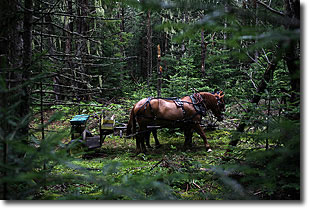 Parcelization and Demographic Shifts
Parcelization and Demographic Shifts
Parcelization of forests is widely regarded as a tremendous ecological and economic threat. At the same time, the in-migration of urban people moving to rural areas creates an accompanying social destabilization.
NNFP’s focus is on supporting the development of “Small Working Woodlands” projects. These projects help INCREASE jobs in forestry that rural communities fear will be LOST because of urban people moving in and “doing nothing” with their timber. These strategies recognize that many urban immigrants are not comfortable with conventional forestry operations (because of size of equipment, aesthetics, and lack of environmental sensitivity). At the same time conventional logging operators cannot work on the small parcels as they do not find them profitable. The Small Working Woodlands approaches develop “light on the land” logging practices and long-term sustainable forestry prescriptions that are compatible with the new landowners’ interests in maintaining aesthetics and their smaller interest in timber revenue. Small scale logging approaches, including horse logging and small equipment, are used which cost more but meet landowners’ objectives and are covered by landowners willingness to see somewhat lower revenue from their timber. In some areas, especially fire-prone areas, forest management activities such as thinning are carried out as “services” for landowners (for fire protection, aesthetics, restoration), with harvesting of wood being subsidized in this way. In other areas the lighter-on-the-land logging approach is paired with marketing to the Green Building industry and other markets where customers are willing to pay more for FSC-certified wood with a good story behind it.
A great example of a Small Working Woodlands group is a forest landowner cooperative which takes landowners who otherwise would not manage their woods and gives them the confidence of an “environmentally sensitive” management and harvesting system. This gets those lands held by “outsiders” into management and creates jobs for local families that would not be there without the co-op. Co-ops can even leverage “outside” landowner investment in value-adding activities that create additional jobs.
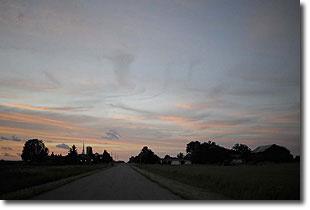 Globalization
Globalization
US manufacturing jobs are going overseas. At the same time, many people are employed in high-paying jobs that didn’t exist thirty years ago. The economy is changing, and with the New International Division of Labor the US economy has shifted, considerably, toward information-related jobs. Simultaneously there is a body of discretionary spending money that was unknown during the manufacturing “boom” in the US. Many urban dwellers with high-paying jobs are looking for “green” products, “authentic” experiences, and other intangibles that rural areas can provide. But without relationships with these customers rural businesses will miss out. So by using rural stories to build an authentic “brand” investments in marketing, market research, and market analysis can develop opportunities in the parts of the production and sales cycle that actually makes money- innovation and marketing.
Diversification
Increasingly jobs in forest-related activities are being held by Latino workers, particularly more strenuous, low-wage and dangerous jobs. At the same time, other minority groups have been systematically excluded from forest related resources (EG African American landowners not receiving services, Native American tribes bearing very high levels of unemployment and poverty, etc).
For NNFP to effectively create linkages between the diverse groups in rural forested areas we need to be culturally competent, and aware of what groups are included, excluded and recruited. Developing staff skills in cultural competence, focusing outreach, partnership development, and project development more heavily in minority communities, and cultivating diversity in our staff, board, and membership are important actions to engage diverse participation.
Thoughts about what you’ve read?
If you have any comments or ideas related to NNFP’s work, please go to www.forestpractitioners.ning.com. This is a platform for collaboration, discussion and joint work. You’ll also find more details related to the Strategic Plan, including goals, objectives, and activities.
Check it out at: www.forestpractitioners.ning.com
